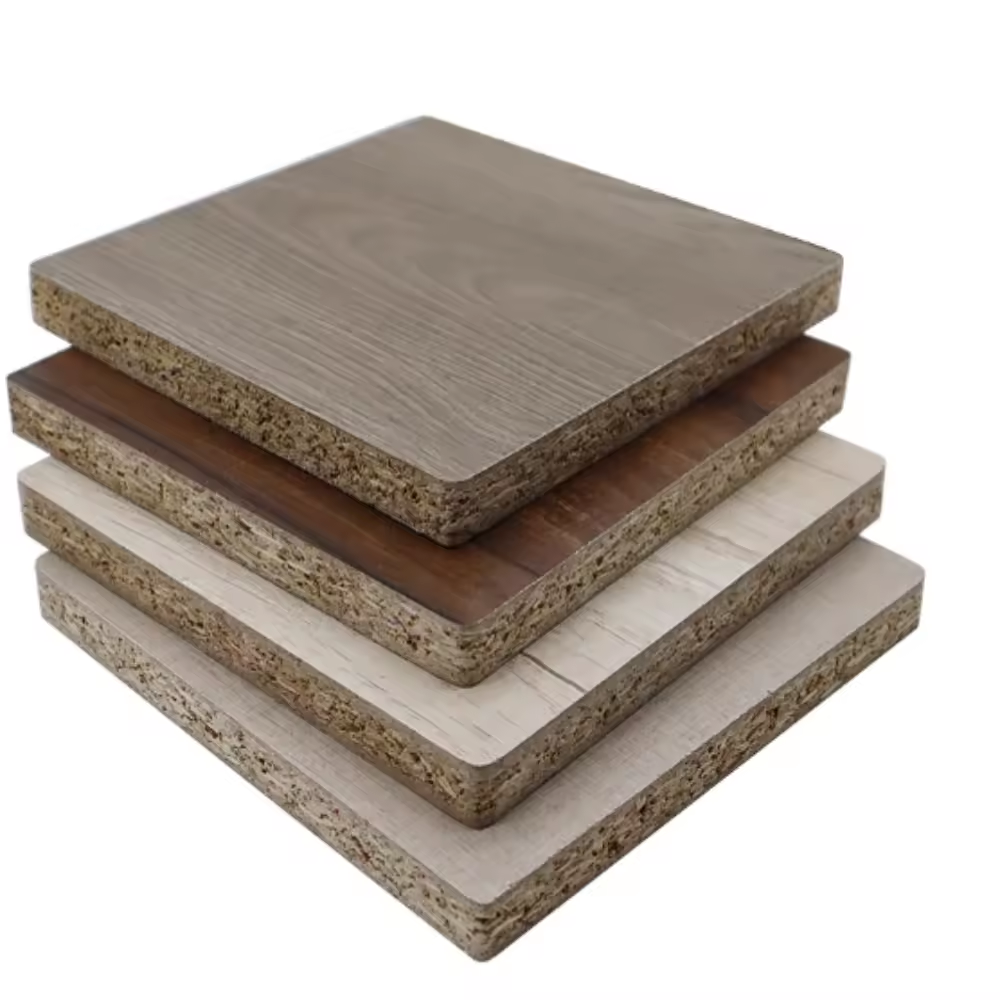Classification of particleboard
Particleboard (also called wood particleboard or granular board) is a board made of wood or other plant fibers, which is crushed, screened, hot-pressed and bonded with adhesives. Due to the different materials and processes used to make it, particleboard can be classified in many ways. According to different standards, particleboard can be classified in the following ways:
1. Classification by use
Ordinary particleboard (Standard Particleboard): Mainly used for non-load-bearing structures such as furniture, building interior decoration, partitions, floors, etc.
Moisture Resistant Particleboard: On the basis of ordinary particleboard, moisture-proof and waterproof additives are added, suitable for humid environments such as kitchens and bathrooms.
High-density particleboard (High-Density Particleboard): It has a higher density than ordinary particleboard, better strength and stability, and is suitable for applications that require higher strength and durability, such as load-bearing structures, floors, office furniture, etc.
Super High-Density Particleboard (Super High-Density Particleboard): It has a very high density and is mainly used in applications that require stronger compressive strength.
Lightweight Particleboard: It has a low density and is mainly used in applications that require weight reduction.
2. Classification by adhesive
Ordinary adhesive particleboard: It is made of general adhesives (such as urea formaldehyde resin). It is cheap, but there may be a certain amount of formaldehyde release.
Environmentally friendly adhesive particleboard: It is made of low-formaldehyde or formaldehyde-free adhesives (such as phenolic resin, melamine resin, and environmentally friendly glue). It meets environmental protection requirements and has low formaldehyde release. It is suitable for places that require environmental safety.
3. Classification by density
Low-density particleboard: It has a low density, usually 0.4-0.6 g/cm³, and is suitable for some applications that do not require too high strength, such as interior decoration and furniture frames.
Medium-density particleboard: The density is between 0.6-0.8 g/cm³ and is widely used in ordinary furniture, interior materials, etc.
High-density particleboard: It has a high density, usually 0.8-1.2 g/cm³, and is suitable for structures that need to bear weight, floor substrates, etc.
4. Classification by processing method
Single-sided particleboard: Only one side of the board is treated or veneered, usually used for furniture panels or interior materials.
Double-sided particleboard: Both sides of the board are treated, commonly used in furniture boards or decorative boards that require high finish.
Prefabricated particleboard: During the production process, the surface of the board has been pre-treated or decorated, such as lamination, embossing, painting, etc.
5. Classification by surface decoration
Laminated particleboard: A layer of film or decorative paper is attached to the surface, commonly used for furniture boards.
Melamine particleboard: The surface is covered with melamine impregnated paper, has good waterproof and anti-fouling properties, and is widely used in furniture manufacturing.
Unfaced particleboard: The surface is not decorated, mainly used in some hidden parts or further processing.
6. Classification by environmental protection level
E0 grade particleboard: The formaldehyde emission is extremely low, meets strict environmental protection standards, and is suitable for environments with very high requirements, such as children’s furniture, interior decoration, etc.
E1 grade particleboard: The formaldehyde emission meets the national environmental protection standards and is widely used in home furnishings, office furniture, building decoration, etc.
E2 grade particleboard: The formaldehyde emission is relatively high and is mainly used in some places that do not require strict environmental protection requirements.
7. Classification by raw materials
Wood particleboard: Made of wood, wood chips, sawdust, etc., the most common type of particleboard.
Bamboo particleboard: Made of bamboo chips, bamboo fibers, etc., it has the unique properties of bamboo and is suitable for certain specific uses.
Other plant fiber particleboards: Such as wheat straw particleboard, rice husk particleboard, etc., use non-wood plant fibers as raw materials and are environmentally friendly.







